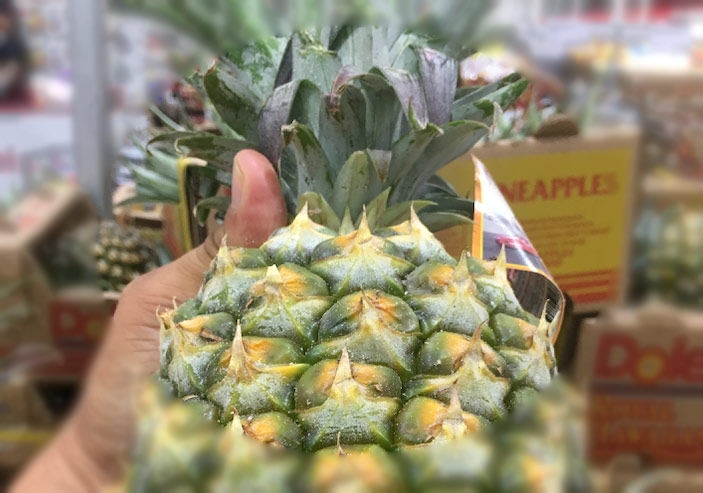하와이언파인애플 - 그의역사
dakine
0
218
0
08.30 21:11
하와이 파인애플의 역사는 농업과 세계 무역의 맥락에서 흥미롭고 중요합니다.
초기 소개: 파인애플은 남미가 원산지이며 19세기 초 유럽 탐험가에 의해 하와이에 소개되었습니다. 이 과일은 1820년대에 섬에 들어왔지만 처음에는 대규모로 재배되지 않았습니다.
상업적 재배: 하와이의 상업적 파인애플 산업은 19세기 후반에 형태를 갖추기 시작했습니다. 1898년, 종종 "파인애플 왕"으로 불리는 James Dole은 오아후 섬에 Hawaiian Pineapple Company(현재 Dole Food Company로 알려짐)를 설립했습니다. 효율적인 재배 및 통조림 공정을 개발하려는 Dole의 노력은 파인애플 산업을 크게 발전시켰습니다.
성장 및 확장: Dole의 리더십 하에 업계는 급속도로 확장되었습니다. 파인애플은 주요 수출품이 되었고, 하와이는 고품질 파인애플로 전 세계적으로 알려지게 되었습니다. 산업은 일자리를 제공하고 경제 성장을 주도하면서 섬 경제에 중요한 역할을 했습니다.
문화적 영향: 파인애플은 하와이와 열대 이미지의 상징이 되었습니다. 파인애플 볶음밥과 같은 요리를 포함하여 하와이 요리에서 눈에 띄게 등장하며 다양한 문화 및 홍보 자료에 사용됩니다.
쇠퇴와 현대 시대: 20세기 후반에 하와이의 파인애플 산업은 국제 생산업체와의 경쟁과 생산 비용 상승 등의 어려움에 직면했습니다. 많은 대규모 파인애플 농장이 폐쇄되거나 운영이 축소되었습니다. 오늘날 하와이의 파인애플 생산량은 예전보다 훨씬 적지만 파인애플은 여전히 섬의 농업 유산과 문화 정체성의 중요한 부분을 차지하고 있습니다.
전반적으로 하와이 파인애플의 역사는 이국적인 과일에서 주요 농산물 및 문화적 아이콘으로의 변화를 반영합니다.
The history of the Hawaiian pineapple is both interesting and significant in the context of agriculture and global trade:
Early Introduction: Pineapples are native to South America, and they were introduced to Hawaii by European explorers in the early 19th century. The fruit was brought to the islands in the 1820s, but it wasn't initially cultivated on a large scale.
Commercial Cultivation: The commercial pineapple industry in Hawaii began to take shape in the late 19th century. In 1898, James Dole, often referred to as the "Pineapple King," established the Hawaiian Pineapple Company (now known as Dole Food Company) on the island of Oahu. Dole's efforts to develop efficient cultivation and canning processes significantly boosted the pineapple industry.
Growth and Expansion: Under Dole's leadership, the industry expanded rapidly. Pineapples became a major export product, and Hawaii became known worldwide for its high-quality pineapples. The industry played a crucial role in the islands' economy, providing jobs and driving economic growth.
Cultural Impact: Pineapples became an iconic symbol of Hawaii and its tropical image. They are featured prominently in Hawaiian cuisine, including dishes like pineapple fried rice, and are used in various cultural and promotional materials.
Decline and Modern Era: By the late 20th century, the pineapple industry in Hawaii faced challenges, including competition from international producers and rising production costs. Many large-scale pineapple plantations closed or reduced operations. Today, while pineapple production in Hawaii is much smaller than it once was, the fruit remains an important part of the islands' agricultural heritage and cultural identity.
Overall, the Hawaiian pineapple's history reflects its transformation from an exotic fruit to a major agricultural product and cultural icon.
초기 소개: 파인애플은 남미가 원산지이며 19세기 초 유럽 탐험가에 의해 하와이에 소개되었습니다. 이 과일은 1820년대에 섬에 들어왔지만 처음에는 대규모로 재배되지 않았습니다.
상업적 재배: 하와이의 상업적 파인애플 산업은 19세기 후반에 형태를 갖추기 시작했습니다. 1898년, 종종 "파인애플 왕"으로 불리는 James Dole은 오아후 섬에 Hawaiian Pineapple Company(현재 Dole Food Company로 알려짐)를 설립했습니다. 효율적인 재배 및 통조림 공정을 개발하려는 Dole의 노력은 파인애플 산업을 크게 발전시켰습니다.
성장 및 확장: Dole의 리더십 하에 업계는 급속도로 확장되었습니다. 파인애플은 주요 수출품이 되었고, 하와이는 고품질 파인애플로 전 세계적으로 알려지게 되었습니다. 산업은 일자리를 제공하고 경제 성장을 주도하면서 섬 경제에 중요한 역할을 했습니다.
문화적 영향: 파인애플은 하와이와 열대 이미지의 상징이 되었습니다. 파인애플 볶음밥과 같은 요리를 포함하여 하와이 요리에서 눈에 띄게 등장하며 다양한 문화 및 홍보 자료에 사용됩니다.
쇠퇴와 현대 시대: 20세기 후반에 하와이의 파인애플 산업은 국제 생산업체와의 경쟁과 생산 비용 상승 등의 어려움에 직면했습니다. 많은 대규모 파인애플 농장이 폐쇄되거나 운영이 축소되었습니다. 오늘날 하와이의 파인애플 생산량은 예전보다 훨씬 적지만 파인애플은 여전히 섬의 농업 유산과 문화 정체성의 중요한 부분을 차지하고 있습니다.
전반적으로 하와이 파인애플의 역사는 이국적인 과일에서 주요 농산물 및 문화적 아이콘으로의 변화를 반영합니다.
The history of the Hawaiian pineapple is both interesting and significant in the context of agriculture and global trade:
Early Introduction: Pineapples are native to South America, and they were introduced to Hawaii by European explorers in the early 19th century. The fruit was brought to the islands in the 1820s, but it wasn't initially cultivated on a large scale.
Commercial Cultivation: The commercial pineapple industry in Hawaii began to take shape in the late 19th century. In 1898, James Dole, often referred to as the "Pineapple King," established the Hawaiian Pineapple Company (now known as Dole Food Company) on the island of Oahu. Dole's efforts to develop efficient cultivation and canning processes significantly boosted the pineapple industry.
Growth and Expansion: Under Dole's leadership, the industry expanded rapidly. Pineapples became a major export product, and Hawaii became known worldwide for its high-quality pineapples. The industry played a crucial role in the islands' economy, providing jobs and driving economic growth.
Cultural Impact: Pineapples became an iconic symbol of Hawaii and its tropical image. They are featured prominently in Hawaiian cuisine, including dishes like pineapple fried rice, and are used in various cultural and promotional materials.
Decline and Modern Era: By the late 20th century, the pineapple industry in Hawaii faced challenges, including competition from international producers and rising production costs. Many large-scale pineapple plantations closed or reduced operations. Today, while pineapple production in Hawaii is much smaller than it once was, the fruit remains an important part of the islands' agricultural heritage and cultural identity.
Overall, the Hawaiian pineapple's history reflects its transformation from an exotic fruit to a major agricultural product and cultural icon.











